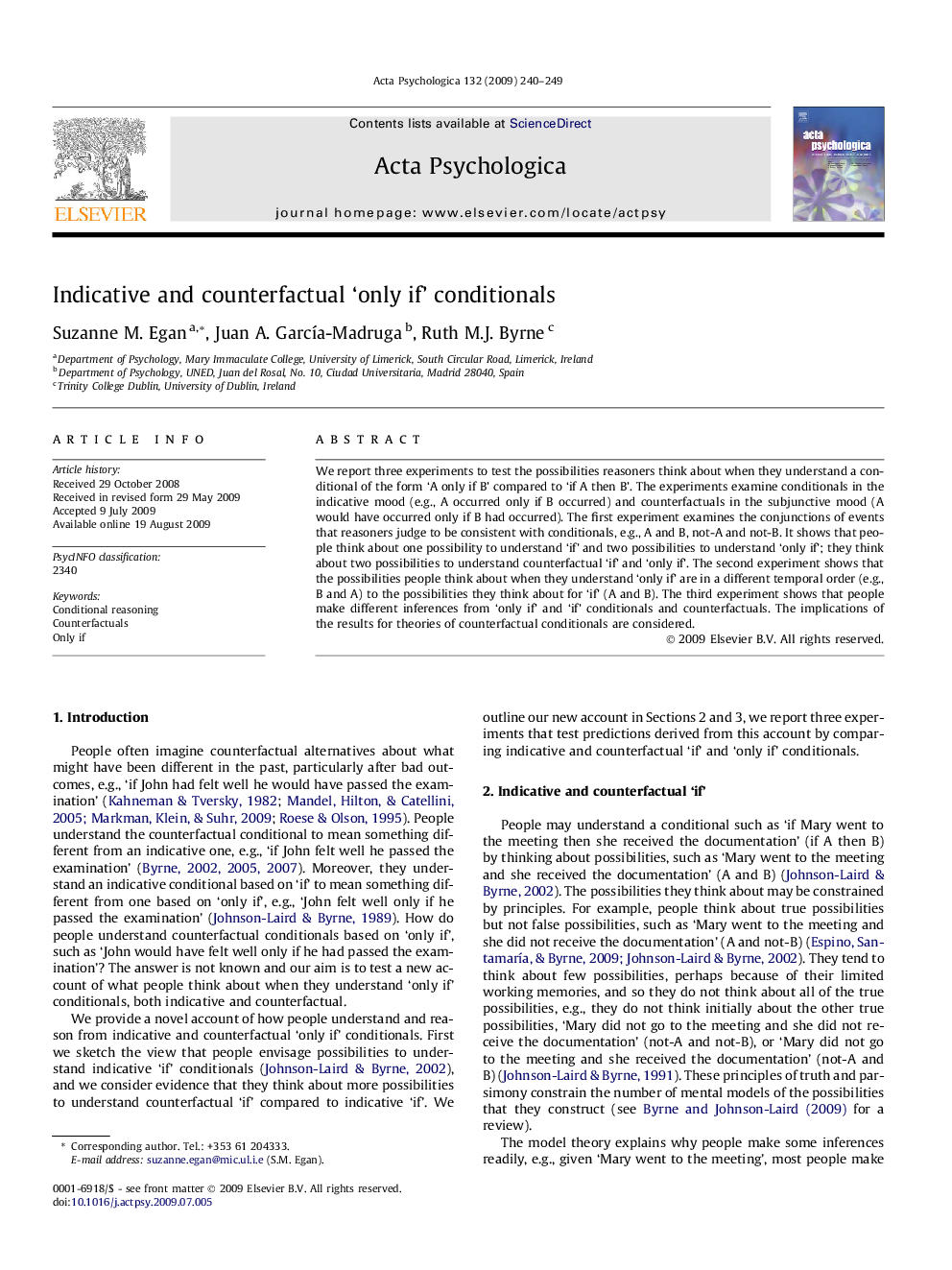| Article ID | Journal | Published Year | Pages | File Type |
|---|---|---|---|---|
| 920289 | Acta Psychologica | 2009 | 10 Pages |
We report three experiments to test the possibilities reasoners think about when they understand a conditional of the form ‘A only if B’ compared to ‘if A then B’. The experiments examine conditionals in the indicative mood (e.g., A occurred only if B occurred) and counterfactuals in the subjunctive mood (A would have occurred only if B had occurred). The first experiment examines the conjunctions of events that reasoners judge to be consistent with conditionals, e.g., A and B, not-A and not-B. It shows that people think about one possibility to understand ‘if’ and two possibilities to understand ‘only if’; they think about two possibilities to understand counterfactual ‘if’ and ‘only if’. The second experiment shows that the possibilities people think about when they understand ‘only if’ are in a different temporal order (e.g., B and A) to the possibilities they think about for ‘if’ (A and B). The third experiment shows that people make different inferences from ‘only if’ and ‘if’ conditionals and counterfactuals. The implications of the results for theories of counterfactual conditionals are considered.
